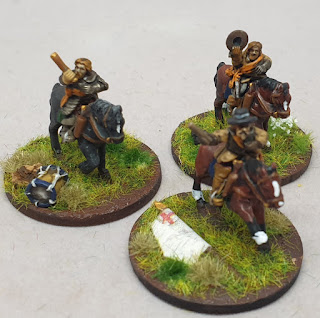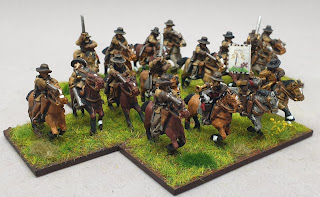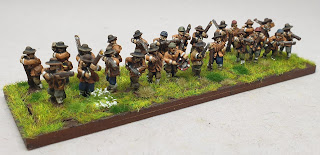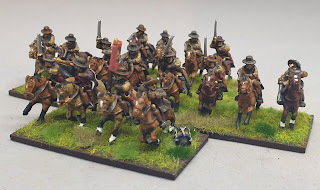Even More Parliamentarian Commanders

There were more Royalist commanders, so only a matter of time before there were more Parliamentarian command figures. First up Sir William Waller , an unadulterated figure, Sir William has a spare regiment of foot flag on his base. Pure bunkum, as a found/captured ensign would be paraded rather than just left on the floor. Normally Maverick flags need sealing with a PVA/water mix but I didn't think I'd be able to get the close folds that I wanted. Trimmed very carefully with a new X-Acto blade I cut the flag so that I had the side I wanted and just enough to wrap around the flagstaff (a spare pike I had lying around), I superglued the flag in position, and once dry I washed the flag with a 75/25 mix of PVA and water, left it to dry for a few minutes then made the folds. Frequent adjustment was required whilst it dried, then any loose strands of fabric were trimmed once it was thoroughly dry. Waller's history is entwinned with that of his good friend, and opponent Sir Ralph...



